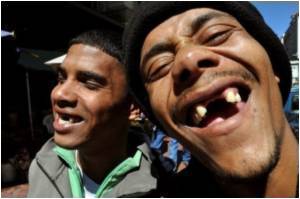Researchers from the University of Granada have said that a person's dental patterns could be as reliable an identity proof for dead bodies as DNA.

The researchers came to the conclusion after analysing the dental patterns of more than 3,000 people.
"There is sufficient dental diversity between people to enable a scientifically-based human identification method to be developed for forensic purposes," said Stella Martin de las Heras, lead author of the study.
The scientists carried out a statistical analysis of 3,166 full and partial sets of teeth taken from the databases in the three most recent National Surveys of Oral Health (1993, 2000 and 2005).
Using these data, the team estimated "conditioned dental diversity", eliminating cases where people had all their teeth "present and healthy" or people who were "edentulous" (without a single tooth in their mouth), as these were of no use for identification purposes.
The results of the study, show variability values of 0.999 (on a scale of 0 to 1), "which is comparable to the rates for a scientifically-based identification method such as mitochondrial DNA", said Martin de las Heras.
Advertisement
"Dental characteristics have low stability within the population compared with mitochondrial DNA sequences, which are only affected by mutations and heteroplasmy (different types within the same mitochondria, cell or individual)," she added.
Advertisement
In this procedure, an oral autopsy makes it possible to obtain a cadaver's dental data.
To do this, forensic scientists use a range of techniques depending upon the body's state of preservation.
In some cases they have to remove the maxillary bones in order to find details that cannot be identified in any other way.
The post mortem dental pattern is compared with the dental data of the person in life, information that is provided by dentists, although it can also come from doctors and family members.
Various IT programmes are used to help in comparison and identification.
The study is published in the journal Forensic Science International.
Source-ANI










